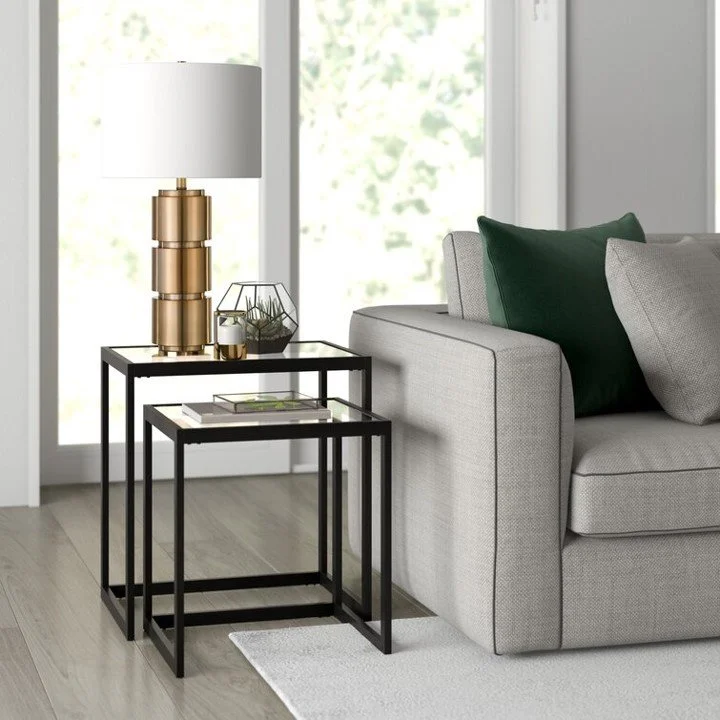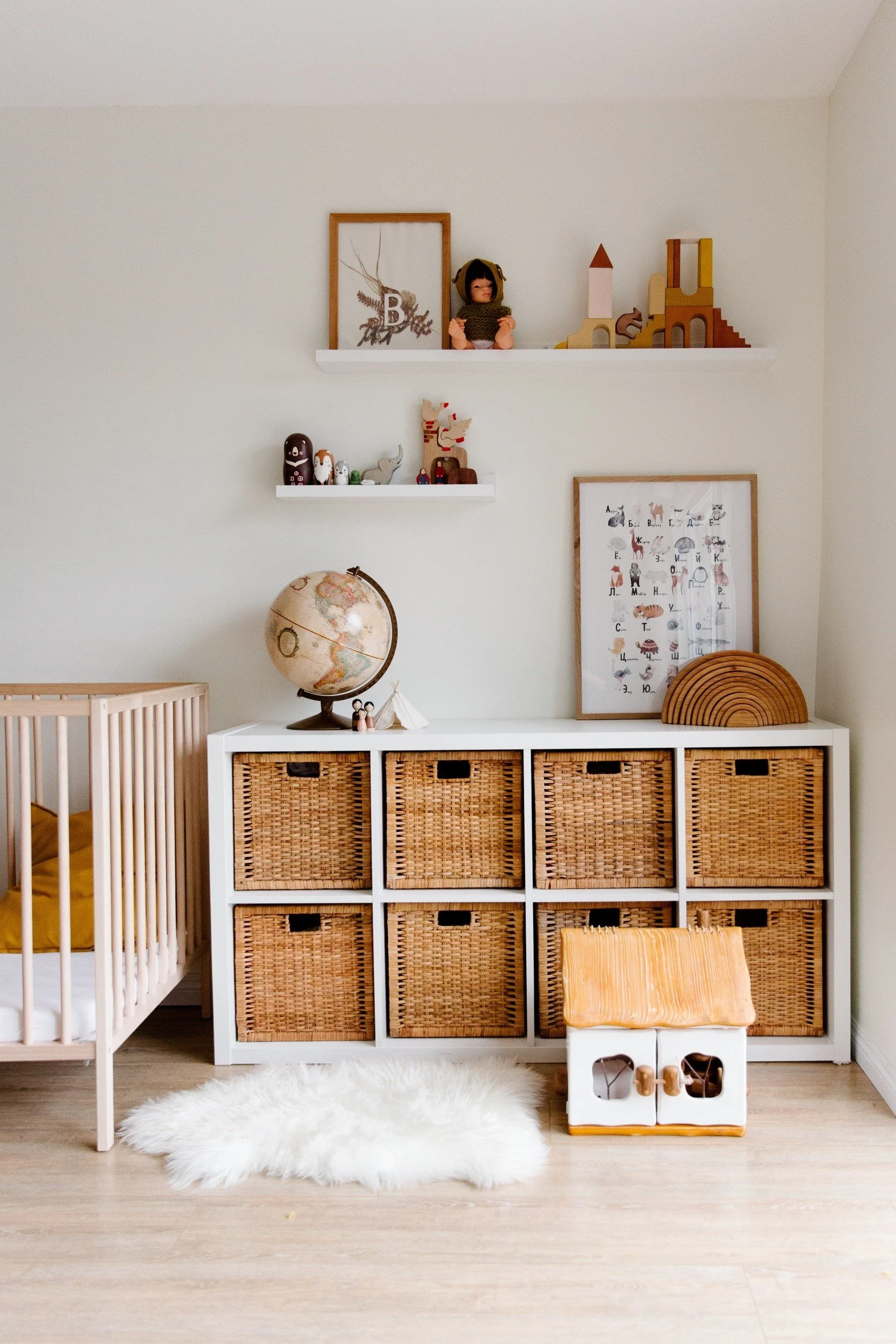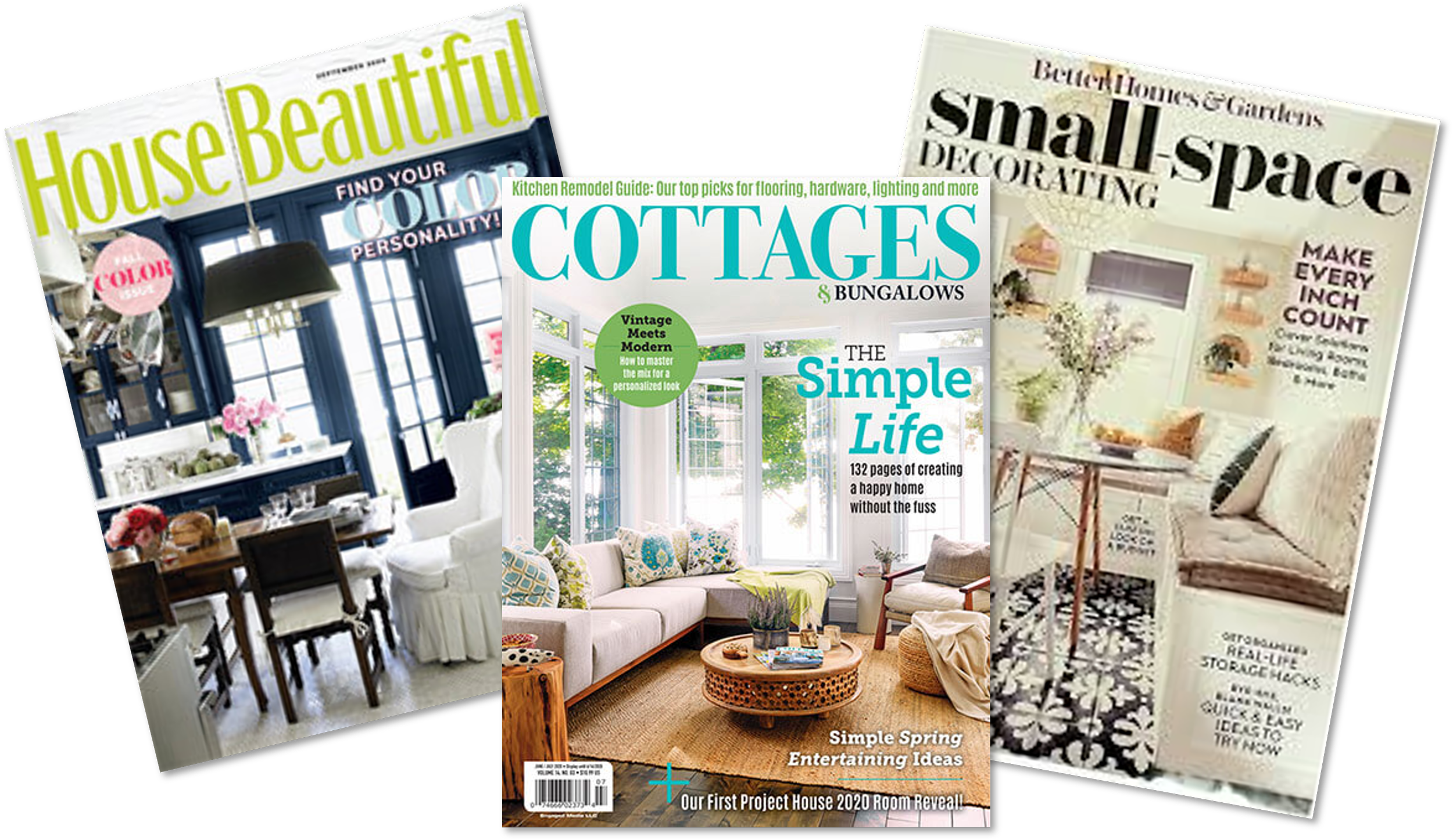Designing a room is an exciting challenge, and with the right approach, it's easier than you would think. With a little planning and some creativity, you can transform any space in your home into a beautiful and functional room that suits your needs and reflects your personal style.
In this post, I'll tell you how to approach your room design from a "what, who, and how" perspective, and cover additional tips on finding inspiration, choosing colors, mixing patterns, and creating a cohesive look throughout your home.
Whether you're starting from scratch or looking to refresh an existing space, these pro tips and inspiration will point you towards creating a beautiful and functional room that perfectly suits your individual needs and style.
Focus on Function First
Collov Home Design
What: Define the main intention for the room. This first step in designing a room is to define its purpose. Is it a living room, bedroom, home office, den, multi-purpose room, or something else? Consider what activities will take place in the room and what kind of furniture and accessories you will need to accommodate those activities.
Examples:
If you're designing a living room, the main intention of the room is likely to be a space for relaxation and entertainment. Consider how many people you want to seat comfortably, whether you need storage for games or movies, and if you want to create a cozy ambiance with warm lighting and soft fabrics.
a home office
If you're designing a home office, the main intention of the room is likely to be productivity and focus. Consider the size of your desk, if you need bookshelves or filing cabinets for storage, and if you want to incorporate elements like natural light and plants to create a calming atmosphere.
If you're designing a multi-purpose room, the main intention of the room is likely to be flexibility and versatility. Think about how you can incorporate furniture that can be easily moved around, such as folding chairs or nesting tables, and how you can organize the space to easily switch between different activities, like game night, movie night, or exercise.
Who: Next, think about who will be using the room and what their needs are. If it's a family room, you may need comfortable seating for TV watching and game time. If it's a home office, you'll need a desk and storage space for supplies. Consider the ages, interests, and lifestyles of the people who will be using the room and make design choices that cater to their needs.
Examples:
If it's a child's bedroom, you'll need to consider their age and interests. A younger child might need space to play and store toys, while an older child may require a desk for studying and a comfortable reading nook.
Tatiana Syrikova
If you're designing a guest room, think about the needs of your guests. You'll want to have comfortable bedding, ample storage space, and perhaps a seating area for relaxation or a surface for work, make-up applying, or writing.
EKATERINA BOLOVTSOVA
If you're designing a home gym, consider the fitness goals and preferences of those who will be using the space. You may need to include equipment for strength training, cardio, or yoga, and ensure that there's enough space for moving around and ventilation.
cottonbro studio
How: This is the point where the “what &who” result in the specifics of a “how.” When you've defined the purpose of the room and the needs of the people using it, you can start to plan the layout and functionality of the space. Think about how the room will be used specifically - will people need places to sit, relax, read a book, exercise, play games, etc.? Arrange furniture and accessories in a way that supports these activities and creates a comfortable and inviting space.
Examples:
If the room will be used for gatherings, consider creating a conversation area with seating arranged around a focal point, like a fireplace or large piece of art.
Mike B
For a bedroom, prioritize a comfortable and supportive bed and consider adding a seating area for reading or relaxing.
The 7 Hotel Lisbon
In a home gym or exercise room, make sure there is enough space for equipment and movement and consider adding mirrors to enhance the feeling of spaciousness.
Eduardo Romero
Focus on Inspiration and Beautification Next
Find inspiration from a variety of sources. Search for popular interior design blogs and browse through their archives for inspiration. Some popular blogs include Apartment Therapy, House Digest, and The Spruce.
Pick up a few home decor magazines or subscribe to some of your favorites. You can find a wealth of inspiration from pages filled with beautiful photos of professionally designed spaces, including specific styles like bungalow homes.
Create a Pinterest board specifically for your room design project and start pinning images that catch your eye. You can also search for and follow other interior design accounts for even more inspiration.
Use the 60-30-10 rule to create a cohesive color scheme: 60% of the room should be a dominant color, 30% should be a secondary color, and 10% should be an accent color.
Here’s how this works:
Stick to neutral colors for the dominant color. For example, choose beige, gray, or white for walls, furniture, and large decor pieces. This will create a calming, cohesive look that allows you to add pops of color through the secondary and accent colors.
Use complementary colors for the secondary and accent colors. For instance, if the dominant color is a cool blue, consider pairing it with warm oranges or yellows for the secondary and accent colors. This creates a visually appealing contrast and adds depth to the color scheme.
Don't be afraid to mix patterns and textures within the color scheme. For example, if your dominant color is a soft green, consider using a patterned rug or textured throw pillows in the secondary or accent color. This creates visual interest and adds dimension to the room.
Avoid fads and choose eclectic decor that reflects your personal style and stands the test of time.
When it comes to choosing decor, it's important to avoid trendy fads and instead select pieces that reflect your personal style and taste. This will ensure that your room feels authentic and timeless, rather than outdated or overly trendy.
Consider mixing different styles and eras to create an eclectic look that is unique to you. Don't be afraid to incorporate family heirlooms or sentimental pieces to add personality and depth to the space.
cottonbro studio
Mix patterns and textures on accent pieces like pillows and decor for added visual interest.
To mix patterns and textures effectively, choose pieces with complementary colors and scales.
For example, if you have a large floral print on a pillow, pair it with a smaller geometric pattern in a similar color palette.
Consider using fabrics with different textures, such as linen and velvet, to add depth and dimension.
Remember to balance out bold patterns with solid-colored pieces to avoid overwhelming the space.
Choose statement art that makes an impact and reflects your personality and style.
When choosing statement art, consider the size and scale of the piece in relation to the room, and choose something that complements the existing color scheme and decor.
Look for art that speaks to you personally and reflects your unique style and personality.
Don't be afraid to think outside the box and choose unconventional pieces that add a touch of whimsy or surprise to the space.
Make it work with other areas of your home:
Finally, when designing a room, it's important to consider how it fits in with other areas of your home.
Create a cohesive look throughout your home by choosing a consistent color palette and style that flows from room to room.
Sidekix Media
Think about the sightlines from adjacent areas and choose decor and furniture that complements the overall aesthetic of your home.
So, designing a room like a pro requires a combination of planning, creativity, and attention to detail.
By considering the purpose of the room, the needs of the people using it, and the layout and functionality of the space, you can create a beautiful and functional room that reflects your personal style.
To take your design skills to the next level, look for inspiration from some of your favorite sources for choosing colors, mixing patterns, and creating a cohesive look.
Do you have a “recipe” for designing a beautiful home? Let’s chat about it! Leave me a comment below.
Read Next:
7 Ways To Add Height And Balance To Small Or Awkward Rooms
If something is feeling "off" in one of your rooms, I'd say that that "something" could be balance. It helps to think of any space in your home as an equation. What you do to one side needs to balance, not necessarily match, the other side. Let me explain…
Join the Fun!
If you enjoyed this post and you want to keep seeing my weekly blog, the best way to do that is to subscribe.
You can subscribe by downloading my 11 Secrets Only Designers Know to Make Your Space Rock. If you’re curious about how decorators and designers make a home look magazine ready, you’ll love taking a gander at these 11 secrets. You’ll learn how to style your room from the floor up and it will work for ANY space you have.
I write about small space design and decorating, sustainable furniture options, positive self care and a variety of do-it-yourself home décor.
I’d love to connect with you!
“Michael Helwig was top-notch, very professional and responsive to my needs. He allowed me time to explore ideas and try out a variety of combinations until we found the perfect fit. Michael provided detailed information and offered beautiful ideas to make my dream living room become a reality. The furniture he sourced has totally transformed my living room space. Everyone that has seen my new living room has one word, WOW! A special thank you to Michael for a wonderful experience.”
“Michael was very knowledgeable and guided us, with great patience and good humor, through the process of designing our dining room and helping us find the perfect sleeper sofa. He offered really helpful advice when we asked questions - which was often - but at no time did we ever feel pushed. He helped me when I felt like I couldn’t make one more decision. When my new furniture finally arrived I realized everything down to the pillows was perfect. I couldn’t be happier!”
cottonbro studio
Michael is Principal designer and blogger at Michael Helwig Interiors in beautiful Buffalo, New York. Since 2011, he’s a space planning expert, offering online interior e-design services for folks living in small homes, or for those with awkward and tricky layouts. He’s a frequent expert contributor to many National media publications and news outlets on topics related to decorating, interior design, diy projects, and more. Michael happily shares his experience to help folks avoid expensive mistakes and decorating disappointments. You can follow him on Pinterest, Instagram and Facebook @interiorsmh.


























